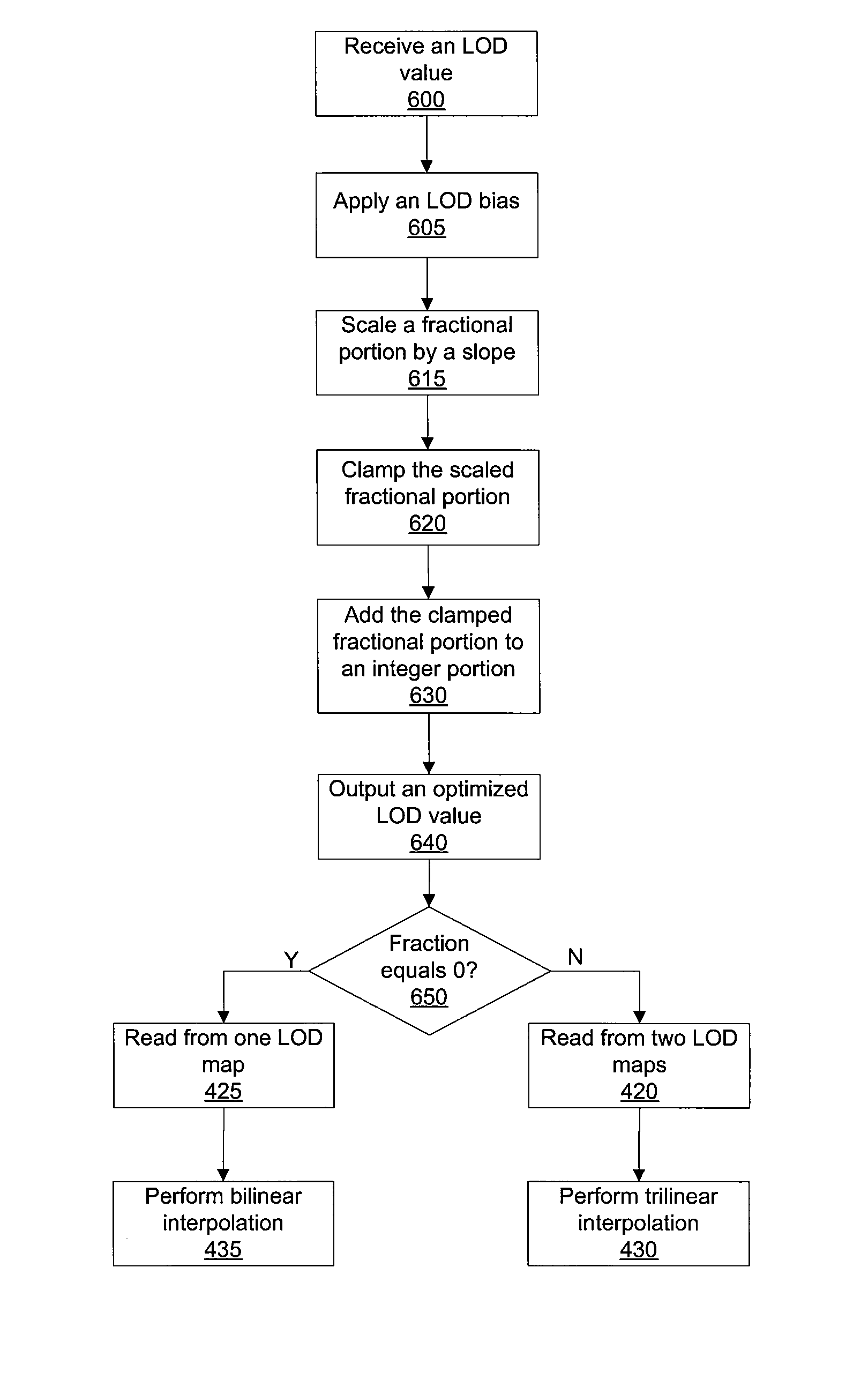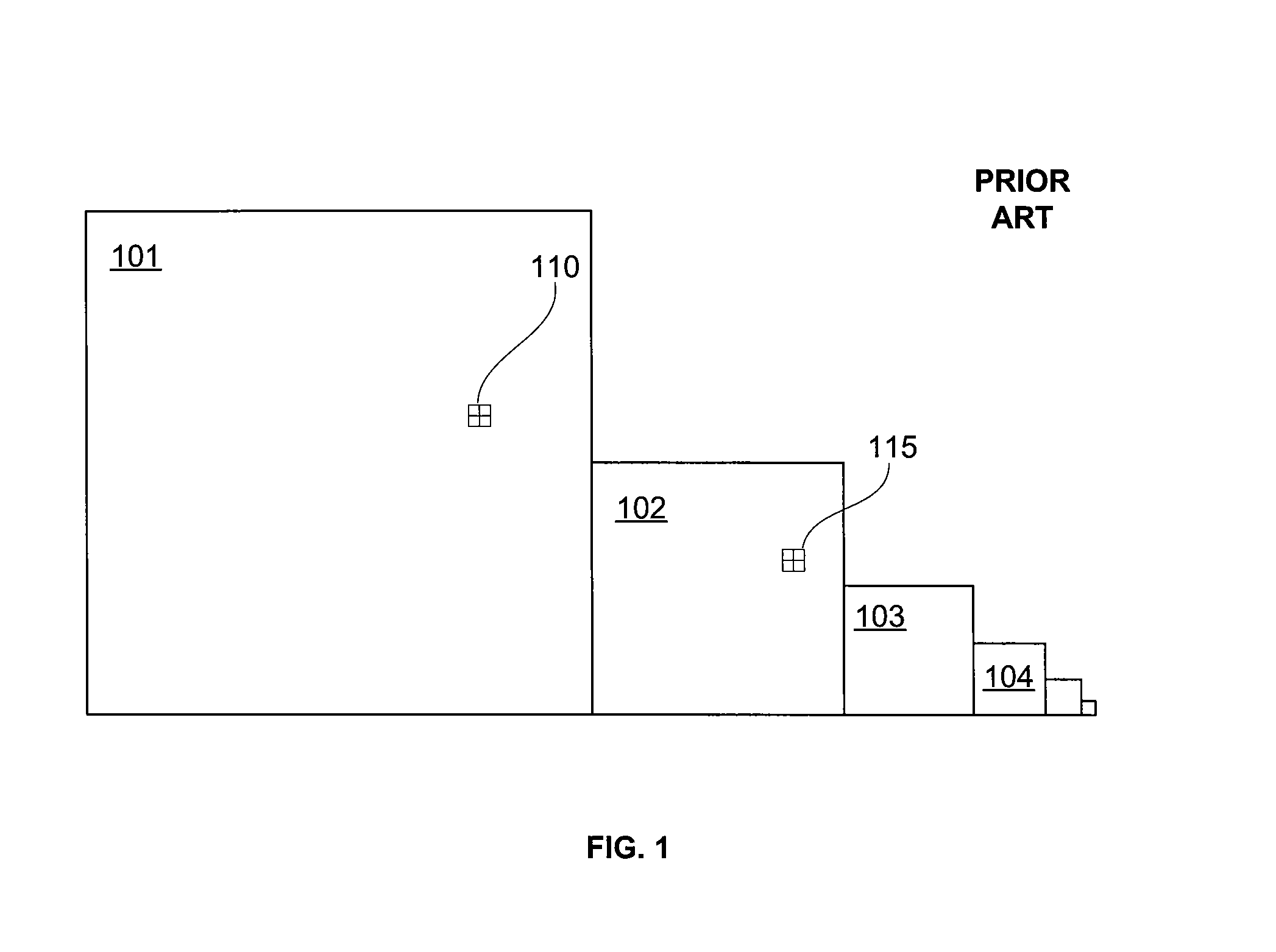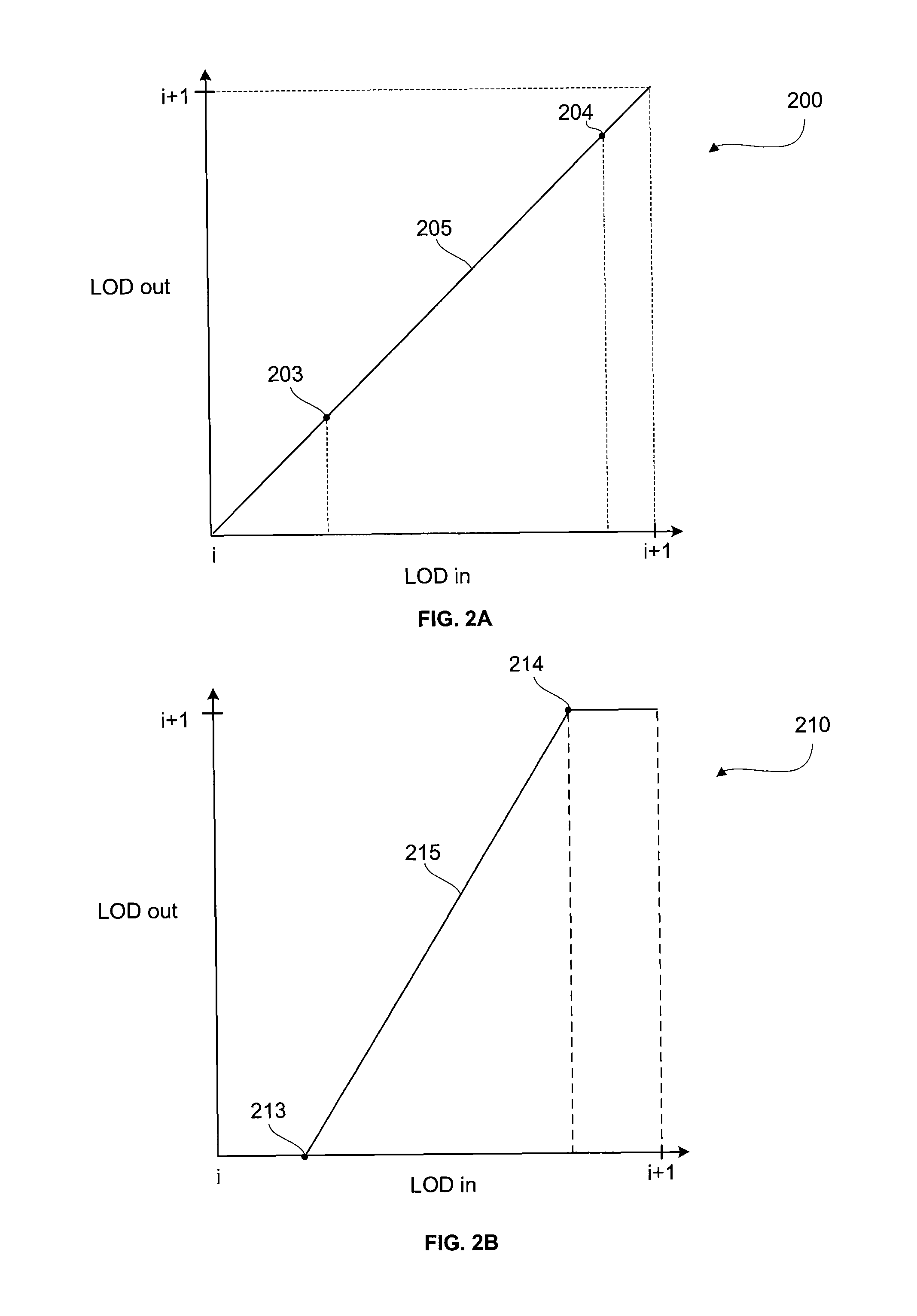Trilinear optimization for texture filtering
a texture filter and trilinear optimization technology, applied in the field of computer graphics, can solve the problems of low quality image and decrease in texture sample filtering performance, and achieve the effects of improving texture map performance, simplifying texture sample filtering computations, and reducing the number of texture samples read
- Summary
- Abstract
- Description
- Claims
- Application Information
AI Technical Summary
Benefits of technology
Problems solved by technology
Method used
Image
Examples
Embodiment Construction
[0023]In the following description, numerous specific details are set forth to provide a more thorough understanding of the present invention. However, it will be apparent to one of skill in the art that the present invention may be practiced without one or more of these specific details. In other instances, well-known features have not been described in order to avoid obscuring the present invention.
[0024]In conventional graphics processors each prefiltered texture map is associated with a LOD (level of detail) value, e.g. the highest resolution map having an LOD value of 0 and successively lower resolution maps having incremented LOD values. In an alternate embodiment the LOD ordering is reversed with the lowest resolution map (1×1) having an LOD value of 0. An LOD value includes an integer portion (i) and a fractional portion. The LOD value is computed from a texture footprint dimension. One way of doing this is to compute an accurate logarithm base 2 of the footprint dimension, ...
PUM
 Login to View More
Login to View More Abstract
Description
Claims
Application Information
 Login to View More
Login to View More - R&D
- Intellectual Property
- Life Sciences
- Materials
- Tech Scout
- Unparalleled Data Quality
- Higher Quality Content
- 60% Fewer Hallucinations
Browse by: Latest US Patents, China's latest patents, Technical Efficacy Thesaurus, Application Domain, Technology Topic, Popular Technical Reports.
© 2025 PatSnap. All rights reserved.Legal|Privacy policy|Modern Slavery Act Transparency Statement|Sitemap|About US| Contact US: help@patsnap.com



